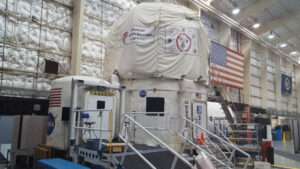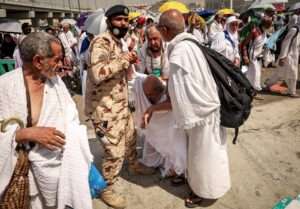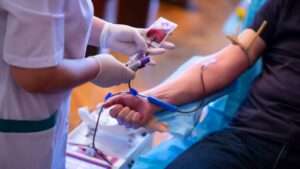Beyond Earth : NASA Selects New Crew for Next Simulated Mars Journey
Houston- In a pioneering endeavor, NASA has assembled a new team of intrepid volunteers for a simulated mission to Mars, set to commence on May 10. Led by Jason Lee, the crew includes Stephanie Navarro, Shareef Al Romaithi, and Piyumi Wijesekara. With a blend of diverse expertise and backgrounds, these individuals will step into NASA’s Human Exploration Research Analog (HERA) in Houston, ready to embark on a 45-day odyssey mirroring the challenges and adventures of a Martian expedition.
Unveiling the Crew
- Jason Lee, an associate professor at the University of Connecticut, brings a wealth of knowledge in mechanical engineering and a passion for exploration.
- Stephanie Navarro, a seasoned space operations officer in the U.S. Air Force Reserve, adds her expertise in systems engineering and a dedication to service.
- Shareef Al Romaithi, a distinguished pilot from the UAE, contributes his extensive aviation experience and a commitment to advancing space exploration.
- Piyumi Wijesekara, a postdoctoral research scientist at NASA Ames Research Center, lends her expertise in radiation biophysics and a drive to unravel the mysteries of space.

NASA Selects New Crew for Next Simulated Mars Journey
A Global Collaboration
In a historic first, Shareef Al Romaithi represents the United Arab Emirates in this mission, highlighting a groundbreaking partnership between NASA and the Mohammed Bin Rashid Space Centre.
Scientific Endeavors
Inside HERA’s confines, the crew will undertake a spectrum of scientific research and operational tasks, emulating the rigors of a Martian expedition. From virtual reality “walks” on Mars’s surface to navigating communication delays akin to those experienced en route to the Red Planet, the crew will push the boundaries of human endurance and adaptability.
Advancing Space Exploration
HERA serves as a crucible for studying human responses to isolation, confinement, and remote conditions, providing invaluable insights for future deep-space missions. Through a series of 18 human health studies, NASA aims to bolster our understanding of the physiological, behavioral, and psychological impacts of prolonged space travel.
- Also Read : Tales of Horror and Hope Amidst UAE Floods
Looking Beyond
As this mission unfolds, NASA continues its relentless pursuit of innovation through analog missions like HERA and the Crew Health and Performance Exploration Analog (CHAPEA). These simulations lay the groundwork for humanity’s next giant leap, paving the way for expeditions to the Moon, Mars, and beyond.
Charting the Future
With each simulated mission, NASA’s Human Research Program propels us closer to a future where humans thrive amidst the stars. From laboratories to analog habitats, every endeavor is a testament to our unwavering commitment to unlocking the secrets of space and ensuring the safety and success of future explorers.
About HERA –

HERA stands for Human Exploration Research Analog. It’s a specialized NASA program designed to provide training for astronauts. HERA is a habitat located at NASA’s Johnson Space Center that simulates the environment astronauts would experience during long-distance space travel, such as to Mars or other distant destinations.
Selected crew members live together in HERA for a main mission duration, ranging from several weeks to months, where they complete various scientific and operational tasks. Through HERA, NASA scientists gain insights into how astronauts adapt to challenges during long-duration space travel and how they respond to them.





